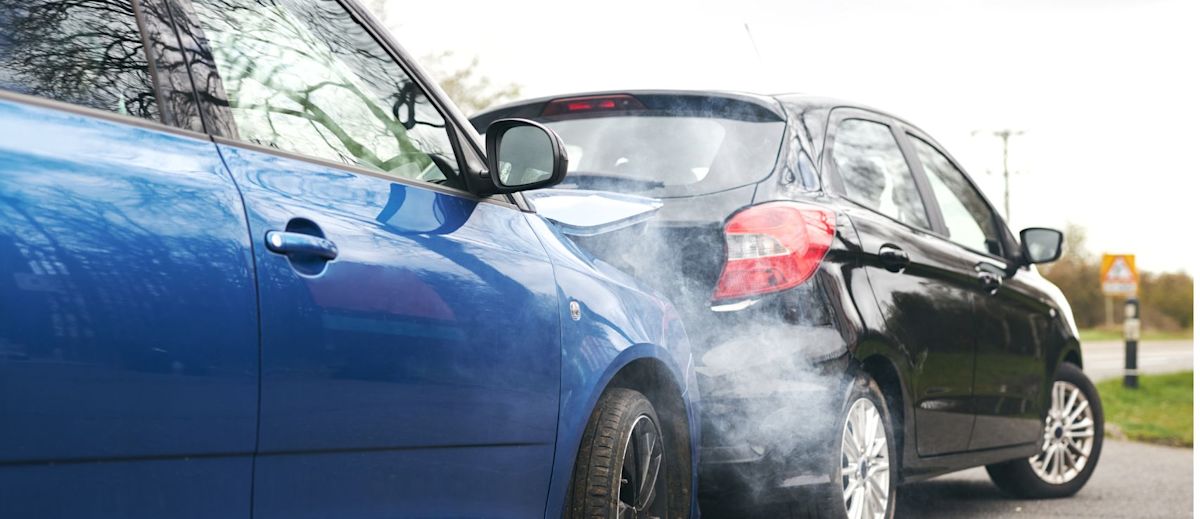
Switching to Third-Party Car Insurance: Is It Worth It?
Living costs keep climbing, and car insurance premiums in New Zealand are no exception. With costs increasing, some Kiwis are considering switching from comprehensive to third-party cover to save some dough. This is reflected in a 2024 Interest.co.nz survey, which found a growing trend of drivers reducing their coverage due to affordability concerns. This blog explores key factors to consider before switching and what to watch out for.
Third-party vs. comprehensive car insurance: what’s the real cost?
With car insurance premiums rising, some Kiwis are looking at ways to cut costs without sacrificing essential coverage. One of the biggest decisions is whether to stick with comprehensive insurance or switch to Third-party, Fire & Theft.
But how much could you really save, and what trade-offs come with the switch? The Quashed Index Q4 2024 reveals some stark differences in pricing between these two options. Here's what the average numbers show:
Age Bracket | Comprehensive Car Insurance ($) | Third-party, Fire & Theft Car Insurance ($) | Difference ($) |
18-24 | $1,667 | $603 | $1,064 |
25-30 | $1,392 | $467 | $925 |
31-39 | $1,341 | $429 | $912 |
40-50 | $1,231 | $422 | $809 |
51-60 | $1,122 | $381 | $741 |
61+ | $1,168 | $386 | $782 |
Source: Quashed. These figures represent average annual costs based on data from the Quashed Index Q4 2024. Actual premiums will depend on factors such as the insurer, vehicle type, location, age, and driving history. For important considerations before switching, see 'The Risks of Switching to Third-Party Car Insurance' below.
So, what are some discussion points here?
Young drivers pay more
If you’re under 25, comprehensive car insurance in New Zealand is the most expensive, averaging $1,667 per year. That’s more than double the cost of Third-party, Fire & Theft, making it a tempting option for younger drivers looking to save. The potential $1,064 in savings is significant—but it comes with a trade-off. Opting for Third-party, Fire & Theft means your own vehicle isn’t covered if you’re in an accident.
Price differences are significant but vary by age
Drivers aged 25-39 could save between $912 and $925 per year by switching to Third-party, Fire & Theft. For those 40 and older, the savings shrink to $741–$809, as car insurance premiums flatten with age.
But here’s the catch: financial confidence doesn’t always mean financial literacy. The Financial Services Council’s 2023 report, Money & You: The Perception Gap, found that while 82% of Kiwis feel financially confident, only 62% demonstrate strong financial literacy. The gap is even wider for under-29s, where just 48% answered key financial literacy questions correctly. This raises an important question: Could younger drivers be underestimating the risks of cutting cover to save money? While there’s no clear-cut answer, financial literacy is an important factor to consider when making insurance decisions.
Is comprehensive cover worth it for an older car?
If your car’s market value is lower than your annual comprehensive premium, it’s worth weighing up whether Third-party, Fire & Theft coverage could be a more cost-effective option.
For example, if you own an older vehicle, paying over $1,000 per year for comprehensive cover may not be cost-effective if the potential payout for a total loss is limited. However, the right choice depends on factors such as your financial situation, risk tolerance, and coverage preferences. Always review your options carefully before making a decision.
While car value plays a major role in deciding whether to switch, it’s only one piece of the puzzle. Other factors—like risk tolerance, financial security, and how often you drive—should also be weighed up before making a move.
Deciding whether to switch isn't just about price—it’s about balancing risk, affordability, and coverage needs.
Let’s break it down further.
When does switching to third-party insurance make sense?
Not sure if you should stick with comprehensive or move to Third-party, Fire & Theft? Here are some key factors to consider:
Your car’s value
If your car is worth less than $5,000, comprehensive insurance might not be worth the extra cost.
The more valuable your car, the more expensive repairs will be, making comprehensive coverage more useful.
Your financial situation
Can you afford to replace your car out of pocket if it gets written off?
If paying for repairs or buying a new car would be a financial strain, keeping comprehensive insurance may be the safer choice.
Your driving habits & location
If you drive frequently in high-traffic urban areas, the risk of accidents is higher—making comprehensive coverage more valuable.
If your car is parked on the street overnight, theft risk is something to consider.
If you live in a low-risk area, Third-party, Fire & Theft might be enough.
The cost difference
With comprehensive insurance costing up to 3x more than Third-party, Fire & Theft, switching could free up hundreds of dollars per year.
However, a cheaper premium isn’t always the best deal—consider what you’re losing in coverage.
Numbers tell part of the story, but how does this decision actually play out in real life? Let’s take a look at a scenario to see the potential savings—and the trade-offs.

Hypothetical example: does switching really save money?
Let’s say Sarah, a 27-year-old driver in Wellington, owns a 2009 Mazda Axela worth $5,500.
Her comprehensive insurance costs are $815 per year.
If she switches to Third-party, Fire & Theft (Third-party, Fire & Theft), she’ll pay just $450 per year.
Potential savings? $365
But here’s the trade-off:
If Sarah’s car is stolen, Third-party, Fire & Theft will cover her.
If she crashes into another car, the damage to their car is covered—but her Mazda won’t be.
If her car gets written off, she’ll need to buy a new one out of pocket.
In her case, switching could be worth it, but only if she’s comfortable with the risk. If she doesn’t have enough money saved up to replace her car, keeping comprehensive might be the safer choice.
Editorial note: this example is for illustrative purposes only and does not represent an actual insurance quote.
The risks of switching to third-party car Insurance
Switching can save money, but there are trade-offs. Before making the switch, be aware of the risks and limitations:
You’re not covered for damage to your own car
If you crash into a tree or someone else’s car, Third-party, Fire & Theft insurance won’t cover your repair costs.
If an uninsured driver hits you, you could be left paying the bill.
Higher out-of-pocket costs for accidents
Comprehensive insurance covers more than just repairs—it can cover a rental car while yours is being fixed.
If your car is written off, you won’t get a payout for a replacement.
Unforeseen events
Comprehensive insurance typically covers natural disasters, theft, and vandalism. However, Third-party, Fire & Theft policies generally do not cover storm, flood, or earthquake damage. If you live in an area prone to flooding, earthquakes, or other severe weather events, comprehensive insurance may offer greater protection. Always check the specific terms of your policy to confirm what is covered.
Outstanding finance could leave you in debt
If your car is written off but still under finance, you must continue repaying the loan, even if you can’t drive the car.
Consumer NZ warns that if your insurance payout is lower than the remaining balance on your loan, you will have to cover the shortfall out of pocket.
For example, if your car is insured for $10,000, but you still owe $15,000 in finance, you would need to pay the remaining $5,000 yourself.
Given these risks, some drivers may find themselves reconsidering their decision. But is switching back to comprehensive as easy as it sounds?

How Quashed makes comparing car insurance easy
Car insurance isn't one-size-fits-all, and switching policies isn’t just about the base premium.
With Quashed, you can easily compare:
Policy types: Instantly see how switching from comprehensive to third-party affects your premium.
Excess & sum insured: Adjust these settings to balance upfront costs and potential out-of-pocket expenses during a claim.
Payment frequency: Compare the difference between paying monthly versus yearly to find the most cost-effective option.
Is Third-party, Fire & Theft insurance the right choice for you?
Switching from comprehensive to Third-party, Fire & Theft insurance can be a smart move—but only if it fits your risk tolerance, car value, and budget. Before making the switch, compare real premium costs, think about your financial situation, and weigh up the risks vs. rewards.
Not sure what’s for you? Use Quashed to compare car insurance options now.
Checklist: Questions to ask before switching
Thinking about switching to Third-party, Fire & Theft? Before making the decision, ask yourself:
What’s my car worth? If it’s under $3,000, would Third-party, Fire & Theft be a smarter option?
Can I afford to replace or repair my car? If not, would keeping comprehensive insurance provide better financial protection?
How often do I drive? If you’re on the road daily, does the increased risk justify keeping full coverage?
Where do I live and park? Am I in a high-crime or accident-prone area where comprehensive insurance is the safer bet?
Have I compared my options? Could switching policies save me money without sacrificing essential coverage?
Need a little help? Use Quashed to compare car insurance options now and make an informed choice.
Smart choices start with smart comparisons
Insurance isn’t one-size-fits-all, and with rising premiums, it's important to review your options.
Whether you're considering comprehensive or third-party car insurance, understanding the cost differences and coverage trade-offs is key. With Quashed, you can:
Compare policies side by side: See how different insurance types, excess levels, and sums insured affect your premium.
Understand what you’re paying for: Get clear, data-driven insights tailored to your situation.
Join 45,000+ Kiwis already making smarter insurance decisions.
Check your cover today—compare with Quashed.
Further reading
Check out these articles to level up your car insurance knowledge and find ways to save:
Smart Ways to Slash Your Car Insurance: Clever strategies to keep your premiums low while still getting the coverage you need.
Car Insurance Guide: Everything you need to know about car insurance.
Comparing Insurance Costs for Top Cars: See how car models impact your premiums and how to compare costs effectively.
Electric Vehicles: Do They Cost More to Insure?: Do electric cars really cost more to insure? Find out here.
How to Compare Car Insurance Quotes: Everything you need to know about getting the best car insurance quotes.
Cheap vs. Best Car Insurance: Is cheaper always better? Find out the difference between the cheapest and the best value.
FAQs
What should I know before switching to third-party insurance?
Switching to third-party insurance saves money, but it also reduces your coverage.
Key things to consider before downgrading:
No cover for your own car – If you crash, repairs come out of your pocket.
Uninsured driver risk – Some policies won’t cover damage if hit by an uninsured driver.
Theft & fire limitations – Third-Party, Fire & Theft covers these risks, but it’s still not as comprehensive.
Tip: If your car is older or not worth much, Third-Party may be a good fit—but weigh up the risks before switching.
Can I switch back to comprehensive insurance if I change my mind?
Yes, you can switch back to comprehensive at any time, but your premiums may change.
Things to check before switching back:
Coverage gaps matter – Insurers may adjust pricing based on any break in coverage.
Premiums could be different – You may not get the same rate as before.
Reapplication may be required – Some insurers might reassess your risk.
Tip: If you think you might go back to comprehensive later, ask your insurer about potential pricing changes first.
How can I compare different car insurance options?
Comparing car insurance options helps you find the best deal—but it's important to compare both price and coverage.
Ways to compare policies effectively:
Use online insurance comparison tools – These allow you to view multiple providers at once.
Get quotes directly from insurers – Pricing can vary based on your driving history.
Check for hidden costs – Some policies look cheap upfront but have higher excesses or exclusions.
Tip: Quashed lets you compare multiple policies side by side, making it easy to see what suits your budget and needs.
Is Third-party, Fire & Theft insurance enough for all drivers?
Third-Party, Fire & Theft is a good middle-ground, but it’s not for everyone.
Who it works best for:
Drivers of older or lower-value cars – If your car isn’t worth much, full coverage may not be necessary.
Those comfortable with risk – If you can afford to repair or replace your car yourself, it may work.
Who should consider comprehensive instead:
Drivers of newer or high-value cars – The cost of replacing a vehicle is much higher.
Frequent commuters or high-risk drivers – More time on the road = higher risk of accidents.
Tip: The right policy depends on your financial situation and risk tolerance.
Will Third-party, Fire & Theft insurance cover me in all situations?
No, Third-Party, Fire & Theft covers specific risks but not everything.
What it does cover:
Damage you cause to someone else’s car – You won’t have to pay out-of-pocket for their repairs.
Fire & theft protection – If your car is stolen or damaged by fire, you’re covered.
What it doesn’t cover:
Damage to your own car in an accident you cause.
Storm, flood, or vandalism damage (unless specified in your policy).
Breakdowns or mechanical failures.
Tip: If you need broader protection, consider a policy with extra coverage options.
This article provides general information only and does not constitute insurance or financial advice. Insurance policies vary between providers, and you should check with your insurer or a licensed adviser for guidance specific to your situation. For full details, refer to Quashed’s terms and conditions.
